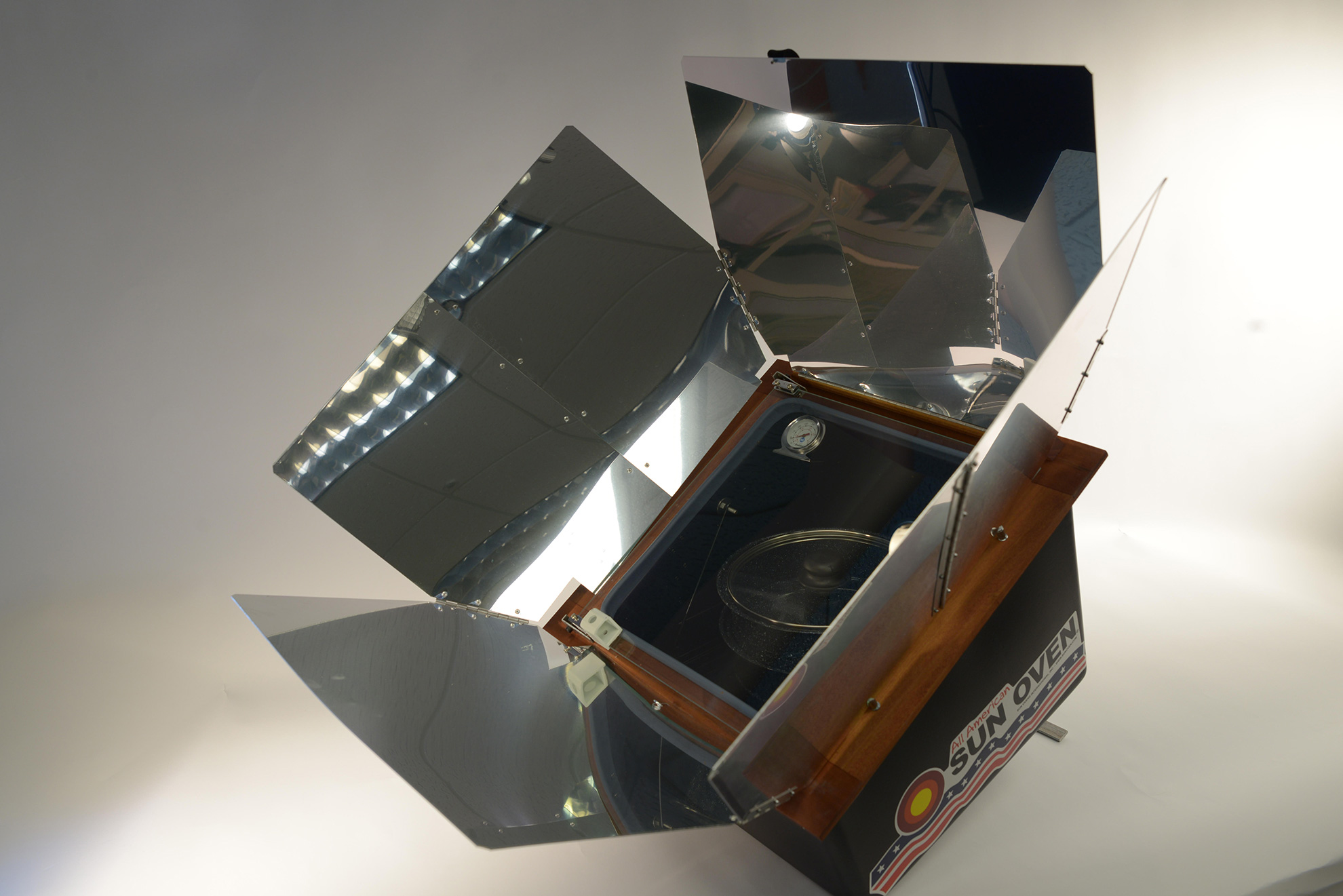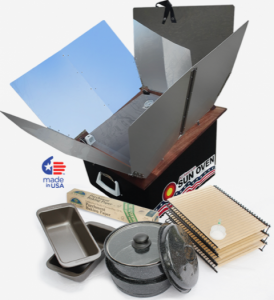July 10, 2018

ASES: Joining us today is the President of Sun Ovens International (SOI), Paul Munsen. Welcome, Paul! Tell us about SOI and about what led you to become involved in solar cooking.
MUNSEN: Sun Ovens™ have been on the market for 31 years, and I took over making them from the inventor 20 years ago. We have a simple business model. We think it can be a win-win if we can help families in the U.S. save energy and prepare for emergencies by using Sun Ovens; and we use a portion of the proceeds from U.S. sales in our work around the world.
In 1997 I was introduced to Tom Burns (the inventor). He had taken a concept
that has been around for centuries and combined it with improved materials and design to make the most effective solar cooking devices in the world. The first sun-cooked meal I had was baked chicken. It was so moist and tender that I instantly became hooked.
When I learned how many children around the world died each year due to lung disease from cooking-fire smoke, I knew I had to get involved. To me it seemed like the perfect job to help people in the U.S. discover new, fun, and healthy ways to cook while making a difference in the lives of women and children, and all while helping the environment. So in 1998 when Tom retired, I stepped in.
ASES: Your customers range from outdoor cooking enthusiasts to dedicated
homesteaders who want to completely go off the grid. Could you tell us more
about why your customers choose a Sun Oven?
MUNSEN: It’s all about the food. Even though it is called an oven, you can make anything you can bake in your gas or electric oven and most things you cook on your stovetop (with the exception of fried foods) in a Sun Oven.
The amazing thing about a Sun Oven is that even though it reaches
temperatures of 400° F, it is almost impossible to burn food; and sun-cooked food does not dry out. This enables food to be cooked for a longer time at a lower temperature or in less time at a higher temperature, without affecting the quality of the food.
There are two ways to cook in a Sun Oven. If you refocus the oven to follow the sun every 25 to 30 minutes, cooking times will be very similar to cooking with a conventional stove or oven. The other method is much like a crock-pot, where you use your Sun Oven for slow cooking. How it works is that you prepare your dinner, put it in the Sun Oven and point the oven toward where the sun will be approximately halfway through the time you will be gone. Leave, and come home to a tasty, slow-cooked dinner.
Most people find that they pay for their Sun Oven in a few months with the money they save on cooking fuel and cooling costs, so besides the great taste and lifestyle advantages, Sun Oven customers continue to reap the financial benefits for years to come. And I’m happy to say, Sun Ovens are made right here in the U.S.
ASES: A major theme for the ASES SOLAR 2018 conference this year will be energy resilience and recovery from accelerating climate-related and other disasters. What role do you see for solar cooking in energy resilience for both communities and individuals?
MUNSEN: Damage to the power grid due to human-made or natural disasters is a very real possibility. Cooking is one of our most basic needs, and having a renewable way to cook in the event of a long-term catastrophe is something every household should seriously consider.
Last year four hurricanes made landfall in the U.S. and its territories, resulting in the loss of power to millions of households. Often after a storm, the sun returns in a matter of hours, but it takes much longer for the power grid to be restored.
Many people told us they used their Sun Oven to cook but also to pasteurize their drinking water. Some shared stories of neighbors bringing them roasts from their freezers to cook before they spoiled. A supply of propane, butane, or wood will only last so long, but a real, renewable solution comes up every morning.
ASES: We have invited you to share a free online workshop for ASES members. Paul, what will this workshop cover, and how can our members register?
MUNSEN: We call the workshop “13 Ways to Harness the SUN to Save Money & Live Naturally!” We will cover the basics of how to bake, roast, boil and steam food (for vegetarians and meat lovers) year-round with the power of the sun, as well as dehydrate herbs, fruits, and vegetables and make jerky. We’ll also show some unconventional ways to use captured sunlight to hard-boil eggs, sterilize potting soil and make sun tea. We will shed light (pardon the pun) on how to prepare for emergencies by using the sun to pasteurize drinking water, sterilize medical instruments, and kill bugs that have invaded your food.
There is no cost to attend and you can register by visiting: https://www.sunoven.com/american-solar-energy-society-workshop/
Everyone who registers will be entered into a drawing to win a Sun Oven with a
Dehydrating and Preparedness Accessory Package. The winner will be announced at the end of the workshop. Registrants will also receive a free helpful eBook Emerging from an Emergency: What You Should Do if…?

Being prepared for disasters and emergencies can seem like a big job. Many
people don’t know where to start, so they never start at all. This book is a
compellation of publicly available documents to aid folks in the planning process to enhance the likelihood of survival from any kind of tragedy.
ASES: Attention everyone attending the ASES SOLAR 2018 conference this year: we will also be giving away one free Sun Oven with a Dehydrating and Preparedness Accessory Package. You can enter during registration and a winner will be announced during the awards banquet Thank you, Paul, for sharing your story and your commitment to bringing solar
cooking into our day-to-day lives!
